-
 Bitcoin
Bitcoin $119300
1.07% -
 Ethereum
Ethereum $3730
3.87% -
 XRP
XRP $3.235
0.29% -
 Tether USDt
Tether USDt $1.000
0.00% -
 BNB
BNB $783.5
1.88% -
 Solana
Solana $188.7
0.25% -
 USDC
USDC $0.0000
-0.01% -
 Dogecoin
Dogecoin $0.2399
-0.44% -
 TRON
TRON $0.3157
2.37% -
 Cardano
Cardano $0.8254
1.94% -
 Hyperliquid
Hyperliquid $42.83
0.14% -
 Stellar
Stellar $0.4372
3.21% -
 Sui
Sui $3.859
4.91% -
 Chainlink
Chainlink $18.53
3.53% -
 Hedera
Hedera $0.2464
0.01% -
 Bitcoin Cash
Bitcoin Cash $519.8
2.46% -
 Avalanche
Avalanche $24.24
2.17% -
 Litecoin
Litecoin $113.7
0.73% -
 UNUS SED LEO
UNUS SED LEO $8.990
0.30% -
 Shiba Inu
Shiba Inu $0.00001390
0.21% -
 Toncoin
Toncoin $3.188
1.49% -
 Ethena USDe
Ethena USDe $1.001
0.02% -
 Polkadot
Polkadot $4.090
-0.91% -
 Uniswap
Uniswap $10.40
4.08% -
 Monero
Monero $326.6
3.12% -
 Bitget Token
Bitget Token $4.627
-0.42% -
 Pepe
Pepe $0.00001281
0.76% -
 Dai
Dai $1.000
0.01% -
 Aave
Aave $291.6
0.98% -
 Cronos
Cronos $0.1269
7.26%
How to add stETH to MetaMask wallet.
Add stETH to MetaMask by importing the token using its contract address: 0xae7ab96520DE3A18E5e111B5EaAb095148F0f61e.
Jul 21, 2025 at 11:00 pm
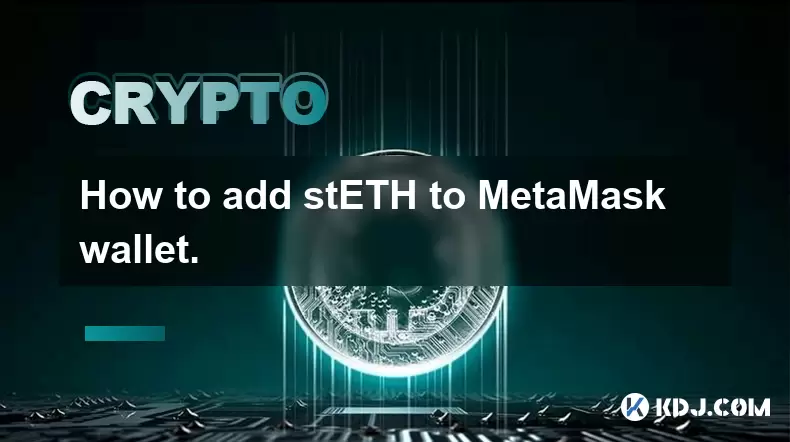
Understanding stETH and Its Role in the Ethereum Ecosystem
stETH, or Lido Staked Ether, is a liquid staking token issued by Lido Finance, a decentralized finance protocol that allows users to stake their Ether (ETH) without locking up their funds. When users deposit ETH into Lido, they receive stETH tokens in return, which represent their staked ETH plus the accrued staking rewards. These tokens can be freely traded or used across various DeFi platforms, making them a versatile asset for yield generation and liquidity.
Unlike traditional staking, where funds are locked until Ethereum's withdrawal phase, stETH provides immediate liquidity, allowing users to participate in other DeFi activities. This feature makes stETH particularly attractive for those who want to earn staking rewards while also engaging in lending, borrowing, or liquidity provision.
Preparing Your MetaMask Wallet for stETH Integration
Before adding stETH to MetaMask, ensure that you have a properly configured MetaMask wallet. This includes:
- Installing the MetaMask browser extension or mobile app.
- Creating or importing an Ethereum wallet.
- Ensuring that you are connected to the Ethereum mainnet.
To confirm that you are on the correct network:
- Open MetaMask.
- Click on the network selector (top center).
- Choose Ethereum Mainnet if it’s not already selected.
It’s important to note that stETH is an ERC-20 token on the Ethereum blockchain, so no additional network configurations (like adding a custom RPC) are required to support it.
Obtaining stETH Tokens
Before you can add stETH to MetaMask, you must first acquire stETH tokens. This can be done in several ways:
- Staking ETH via Lido: Visit the official Lido website and connect your MetaMask wallet. Deposit ETH and receive stETH at a 1:1 ratio, plus ongoing staking rewards.
- Purchasing stETH on a decentralized exchange (DEX): Platforms like Curve Finance or Balancer allow users to swap ETH or other tokens for stETH.
- Buying stETH on centralized exchanges (CEXs): Some exchanges like Kraken, KuCoin, or Binance offer stETH trading pairs.
Ensure that the stETH tokens are sent to your MetaMask wallet address before proceeding to the next step.
Adding stETH to MetaMask Manually
MetaMask does not automatically display all ERC-20 tokens in your wallet. To view stETH balances, you need to manually add the token using its contract address.
Follow these steps:
- Open MetaMask.
- Click on the "Assets" tab.
- Select "Import Tokens".
- Choose the "Custom Token" tab.
- Enter the stETH contract address:
0xae7ab96520DE3A18E5e111B5EaAb095148F0f61e. - The token symbol (stETH) and decimals (18) should auto-fill.
- Click "Add Custom Token".
- Confirm the action if prompted.
After completing these steps, stETH should now appear in your MetaMask wallet with the correct balance.
Verifying stETH Transactions and Balances
Once stETH has been added to your wallet, it’s essential to verify that transactions are functioning correctly. You can do this by:
- Checking the transaction history in MetaMask after depositing or receiving stETH.
- Using block explorers like Etherscan to verify incoming and outgoing stETH transactions.
To view stETH details on Etherscan:
- Go to Etherscan.io.
- Paste your MetaMask wallet address into the search bar.
- Navigate to the "Token" tab to see all token balances, including stETH.
- Click on the stETH entry to view detailed transaction history.
If your stETH balance doesn’t appear, double-check the contract address and ensure that the token was sent to the correct wallet address.
Managing stETH in MetaMask for DeFi Use
Once stETH is visible in MetaMask, you can use it in various DeFi protocols. Some common use cases include:
- Providing liquidity on platforms like Balancer or Curve Finance.
- Depositing stETH as collateral on lending platforms such as Aave or MakerDAO.
- Swapping stETH for ETH or other tokens using decentralized exchanges.
When interacting with these platforms:
- Connect your MetaMask wallet to the respective DeFi app.
- Approve stETH spending when prompted.
- Proceed with the desired action (e.g., deposit, swap, or provide liquidity).
Always ensure that you are interacting with legitimate websites and not phishing clones.
Frequently Asked Questions (FAQ)
Q: Why doesn’t stETH show up in my MetaMask wallet automatically?
A: MetaMask only displays a limited set of tokens by default. stETH must be added manually using its contract address to appear in your wallet.
Q: Can I add stETH to MetaMask on mobile?
A: Yes, the MetaMask mobile app supports adding custom tokens. Follow the same steps as on desktop: go to "Assets" > "Import Tokens" > "Custom Token", and enter the stETH contract address.
Q: Is stETH the same as ETH?
A: No, stETH represents staked ETH and accrues rewards over time. While it can be exchanged for ETH at a rate close to 1:1, the value may fluctuate slightly due to market conditions and staking rewards.
Q: What happens if I send stETH to the wrong network?
A: Since stETH exists only on Ethereum, sending it to a different network (e.g., Binance Smart Chain or Polygon) may result in permanent loss of funds. Always double-check the receiving address and network before sending.
Disclaimer:info@kdj.com
The information provided is not trading advice. kdj.com does not assume any responsibility for any investments made based on the information provided in this article. Cryptocurrencies are highly volatile and it is highly recommended that you invest with caution after thorough research!
If you believe that the content used on this website infringes your copyright, please contact us immediately (info@kdj.com) and we will delete it promptly.
- Bitcoin, Jim Cramer, and the US Deficit: A Wall Street Story
- 2025-07-25 10:30:11
- TGEs, Scalability & Privacy Tech: Decoding the Future of Blockchain
- 2025-07-25 10:30:11
- Ben Askren, FUNKY Memecoin, and the Fallout: A New York Minute
- 2025-07-25 10:50:11
- TRON, Crypto Payroll, and Stablecoins: A New York Minute on the Future of Finance
- 2025-07-25 08:30:11
- WazirX, Revote, and Crypto Unlock: A New York Minute on the Latest Developments
- 2025-07-25 06:50:11
- Hong Kong Stablecoin Regulation: Navigating the Hype and Hurdles
- 2025-07-25 08:30:11
Related knowledge
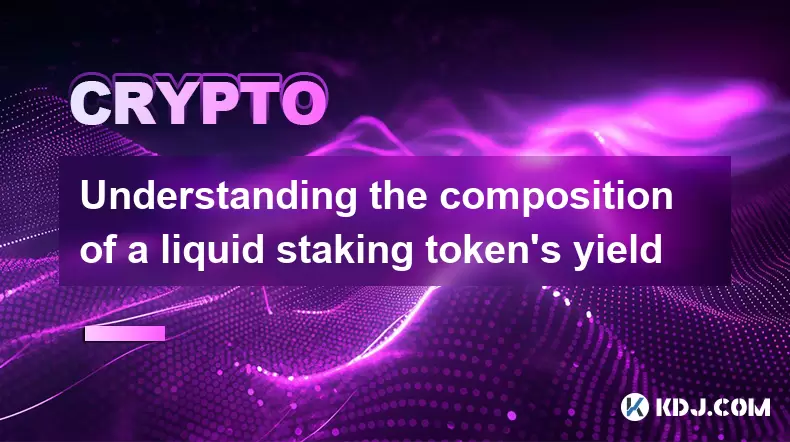
Understanding the composition of a liquid staking token's yield
Jul 20,2025 at 09:07am
What Is a Liquid Staking Token?A liquid staking token is a representative asset issued to users who stake their native cryptocurrency on a proof-of-st...
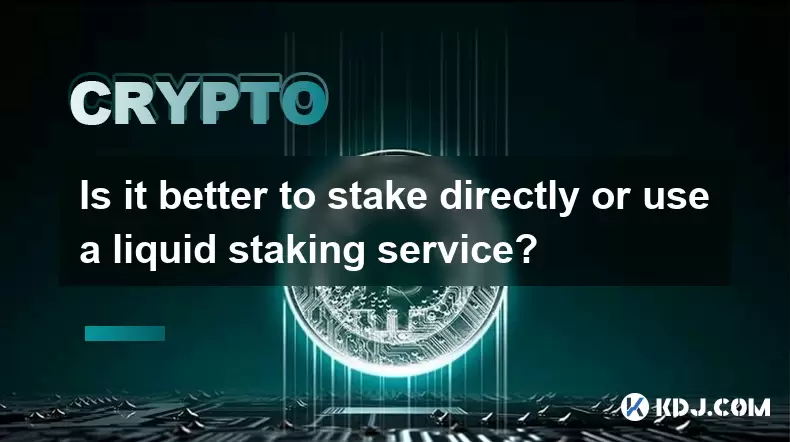
Is it better to stake directly or use a liquid staking service?
Jul 22,2025 at 08:21pm
Understanding the Basics of StakingStaking in the context of blockchain and cryptocurrency refers to the process of locking up digital assets to suppo...

What to do during an LST depeg event
Jul 20,2025 at 04:57pm
Understanding LST Depeg EventsAn LST (Liquid Staking Token) depeg event occurs when the token, which is typically pegged to the value of the underlyin...
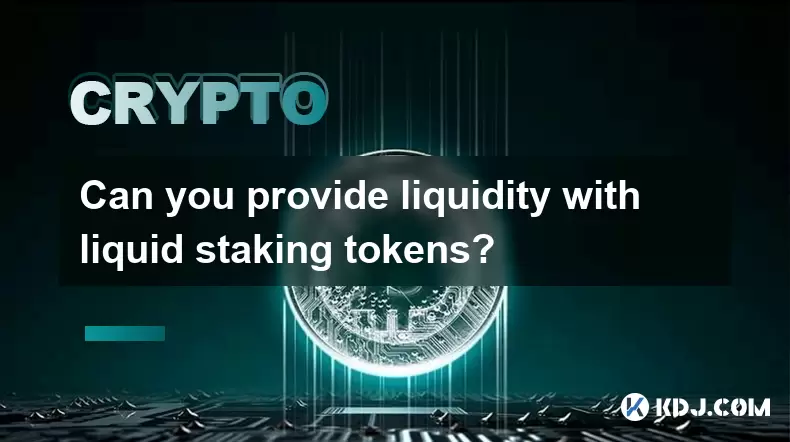
Can you provide liquidity with liquid staking tokens?
Jul 22,2025 at 10:22am
Understanding Liquid Staking TokensLiquid staking tokens (LSTs) are derivative tokens that represent staked assets on a proof-of-stake (PoS) blockchai...

What are the best wallets for storing LSTs?
Jul 21,2025 at 03:14pm
Understanding LSTs and the Need for Secure StorageLSTs, or Liquid Staking Tokens, are derivative tokens representing staked assets on a blockchain. Wh...
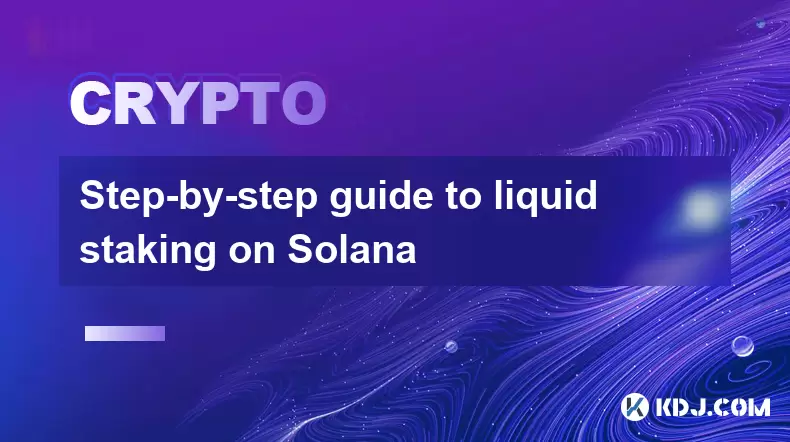
Step-by-step guide to liquid staking on Solana
Jul 20,2025 at 06:42am
What is Liquid Staking on Solana?Liquid staking is a mechanism that allows users to stake their cryptocurrency while retaining liquidity through the i...

Understanding the composition of a liquid staking token's yield
Jul 20,2025 at 09:07am
What Is a Liquid Staking Token?A liquid staking token is a representative asset issued to users who stake their native cryptocurrency on a proof-of-st...

Is it better to stake directly or use a liquid staking service?
Jul 22,2025 at 08:21pm
Understanding the Basics of StakingStaking in the context of blockchain and cryptocurrency refers to the process of locking up digital assets to suppo...

What to do during an LST depeg event
Jul 20,2025 at 04:57pm
Understanding LST Depeg EventsAn LST (Liquid Staking Token) depeg event occurs when the token, which is typically pegged to the value of the underlyin...

Can you provide liquidity with liquid staking tokens?
Jul 22,2025 at 10:22am
Understanding Liquid Staking TokensLiquid staking tokens (LSTs) are derivative tokens that represent staked assets on a proof-of-stake (PoS) blockchai...

What are the best wallets for storing LSTs?
Jul 21,2025 at 03:14pm
Understanding LSTs and the Need for Secure StorageLSTs, or Liquid Staking Tokens, are derivative tokens representing staked assets on a blockchain. Wh...

Step-by-step guide to liquid staking on Solana
Jul 20,2025 at 06:42am
What is Liquid Staking on Solana?Liquid staking is a mechanism that allows users to stake their cryptocurrency while retaining liquidity through the i...
See all articles

























































































